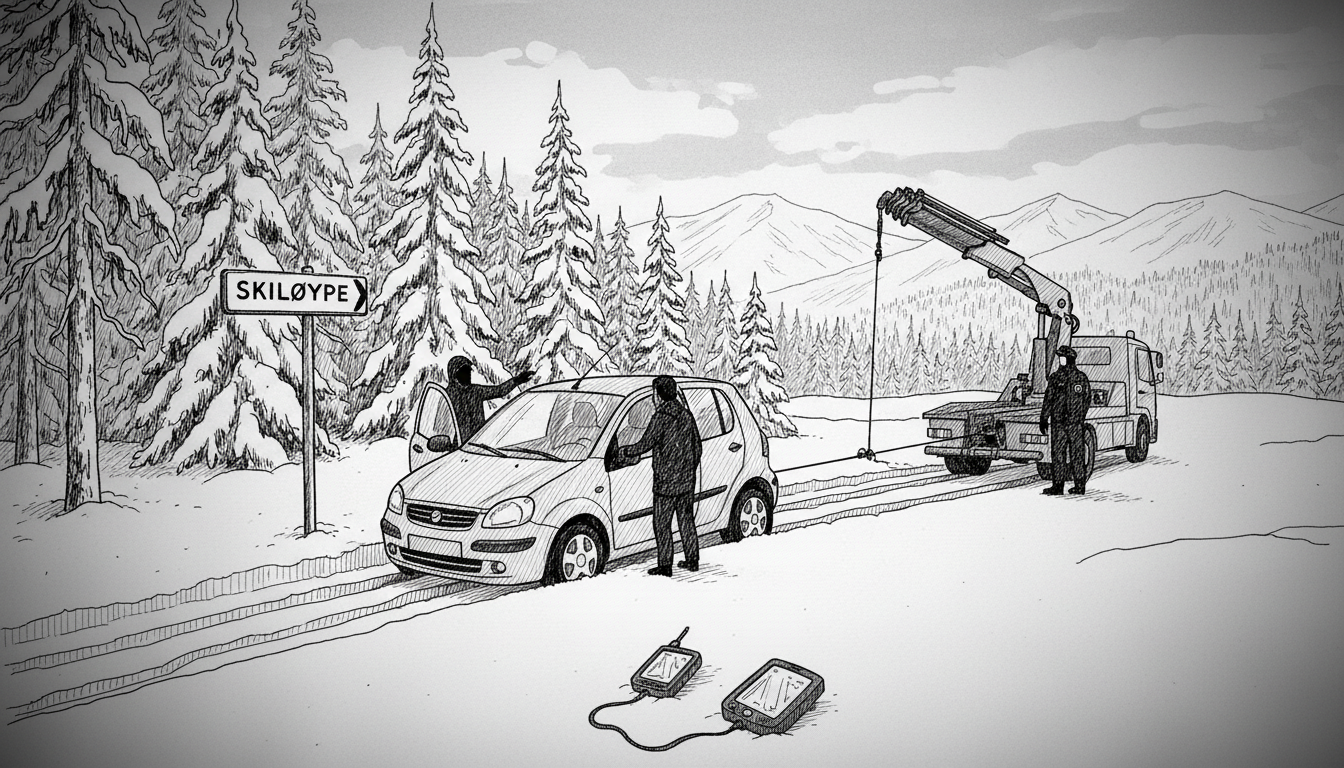Police responded to a ski trail near Prestvannet in Tromsø on Tuesday evening after receiving reports of a car driving into the designated skiing area. A vehicle carrying tourists had traveled several hundred meters along the groomed ski track before becoming stuck in the snow.
Operations manager Øyvind Mevåg confirmed that officers remained on scene waiting for vehicle recovery services. The tourists involved were identified as visitors from Mexico who had apparently followed navigation instructions into the recreational area.
This incident represents part of an ongoing pattern in Norwegian winter destinations. Police officials noted this is not the first time vehicles have damaged ski trails by mistakenly entering protected recreational zones. The operations manager suggested this likely resulted from drivers following digital maps without considering local conditions.
Why do these navigation errors keep occurring in Nordic winter environments? The police representative acknowledged the challenge while noting proper signage exists. Local residents understand these areas contain ski trails during winter months. The situation highlights the gap between digital navigation systems and seasonal changes in Nordic countries.
Northern Norwegian communities like Tromsø face particular challenges with winter tourism. The region attracts international visitors seeking northern lights and Arctic experiences. Many arrive during polar night conditions when limited daylight and snow-covered landscapes create navigation difficulties.
Norwegian authorities maintain strict protections for outdoor recreational areas. Ski trails (lys-løype) represent specially groomed tracks for cross-country skiing, often illuminated for evening use. These facilities receive significant public funding and community maintenance throughout winter months.
Vehicle damage to ski trails creates substantial repair costs and safety concerns. Grooming equipment must rework damaged sections, while ski trail users face potential hazards from vehicle intrusion. The incident occurred during prime evening skiing hours when residents typically use these trails for exercise and recreation.
Tourism officials balance welcoming international visitors with protecting local infrastructure. Northern Norway has experienced rapid tourism growth in recent years. The region now hosts visitors from diverse climates who may lack experience with Arctic winter conditions.
Local police handle multiple similar incidents each winter season. The operations manager expressed understanding toward confused tourists while emphasizing the importance of respecting designated recreational spaces. Recovery operations for stuck vehicles typically involve specialized equipment and significant municipal resources.
The incident raises questions about how navigation technology adapts to seasonal changes in Nordic countries. Digital maps may show passable roads during summer months that become ski trails in winter. This disconnect between digital information and physical reality creates recurring problems in snow-covered regions.
Norwegian authorities continue developing solutions for these seasonal navigation challenges. Some municipalities have implemented additional winter signage, while tourism operators provide specific driving instructions to international visitors. The balance between accessibility and protection remains an ongoing discussion in Nordic communities.

